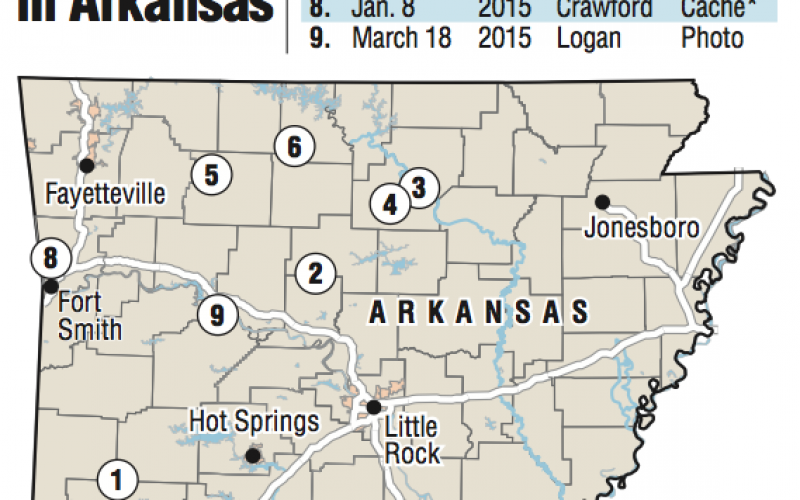 Move over Lion King: Arkansas now has mountain lions. The controversy over whether mountain lions exist locally is over: they’re here, said the Arkansas Game and Fish Commission (AGFC) last year. But is there a breeding population? That’s still under investigation.
Move over Lion King: Arkansas now has mountain lions. The controversy over whether mountain lions exist locally is over: they’re here, said the Arkansas Game and Fish Commission (AGFC) last year. But is there a breeding population? That’s still under investigation.
Even in Northwest Arkansas, people claim to have seen cubs, or a female with a cub, but so far there is no photographic or research-based evidence of this. AGFC also confirmed last year that a mountain lion shot in southern Arkansas was from northern Arkansas, based on DNA testing that matched hair samples from the fur with those found in Marion County. They say it’s likely the individual was a subordinate male pushed south by other adult males occupying territories. It traveled 180 miles in about six weeks, and likely originated in the Wyoming and South Dakota Black Hills breeding population, based on the DNA database.
Mountain lions (also called cougars or pumas) do attack and even kill people, but so rarely that it’s less common than death by snake bite or bee sting, which are pretty uncommon too. The most common scenarios that can lead to lethal cougar attacks based on every reported death by cougars in North America are: leaving children unattended; jogging, hiking, or cycling alone; and bending over. As an example, the worst thing you could do would be to go running through woods alone and bend over to tie your shoe. Or, in the case of cyclists, mountain biking alone on a trail and stopping to bend over your bike and fix the fallen chain.
We know that cougars rarely attack people they encounter because radio collar tracking reveals that these cats can be mere feet away from hikers yet nobody knows they’re around. If you see a mountain lion, appear as large as possible, make noise, maintain eye contact, and never run or turn your back. If you have small children, pick them up. Rein in dogs on leashes because they can provoke aggression in wildlife.
Anything you can do to make yourself appear big and loud will help you avoid an attack. But if an attack happens anyway, or catches you by surprise, fight back! Protect yourself as much as possible, especially your neck and throat. You could throw rocks, backpacking gear, sticks or whatever you can find to dissuade a cougar from viewing you as prey.
However, if you have time to assess the situation, be aware that you might be blocking the cougar’s path to its cubs or its cache of food. Try to give it plenty of space to move around you and slowly increase the distance between you and the cat, but remember to never turn your back or stop making eye contact. With bears and other large predators, the survival skills are different, so only apply these tips to cougar encounters. Attacks are rare, so we can still enjoy the outdoors and give our apex predators the habitat they historically occupied in the balance of nature.
Amanda Bancroft is a Master Naturalist and volunteers with her husband Ryan for their solar-powered online educational center on how to make a difference with everyday choices at: www.RipplesBlog.org.










